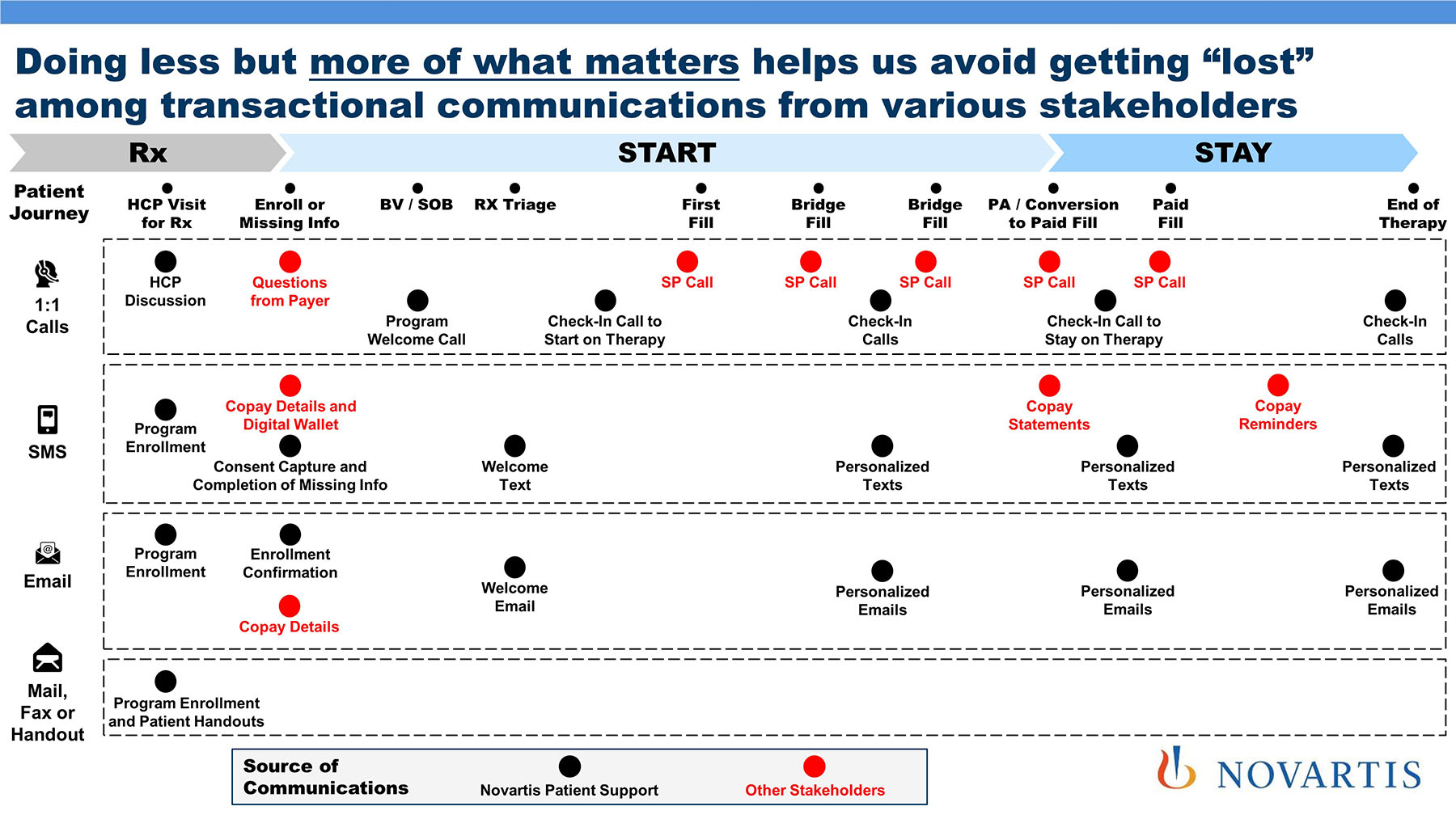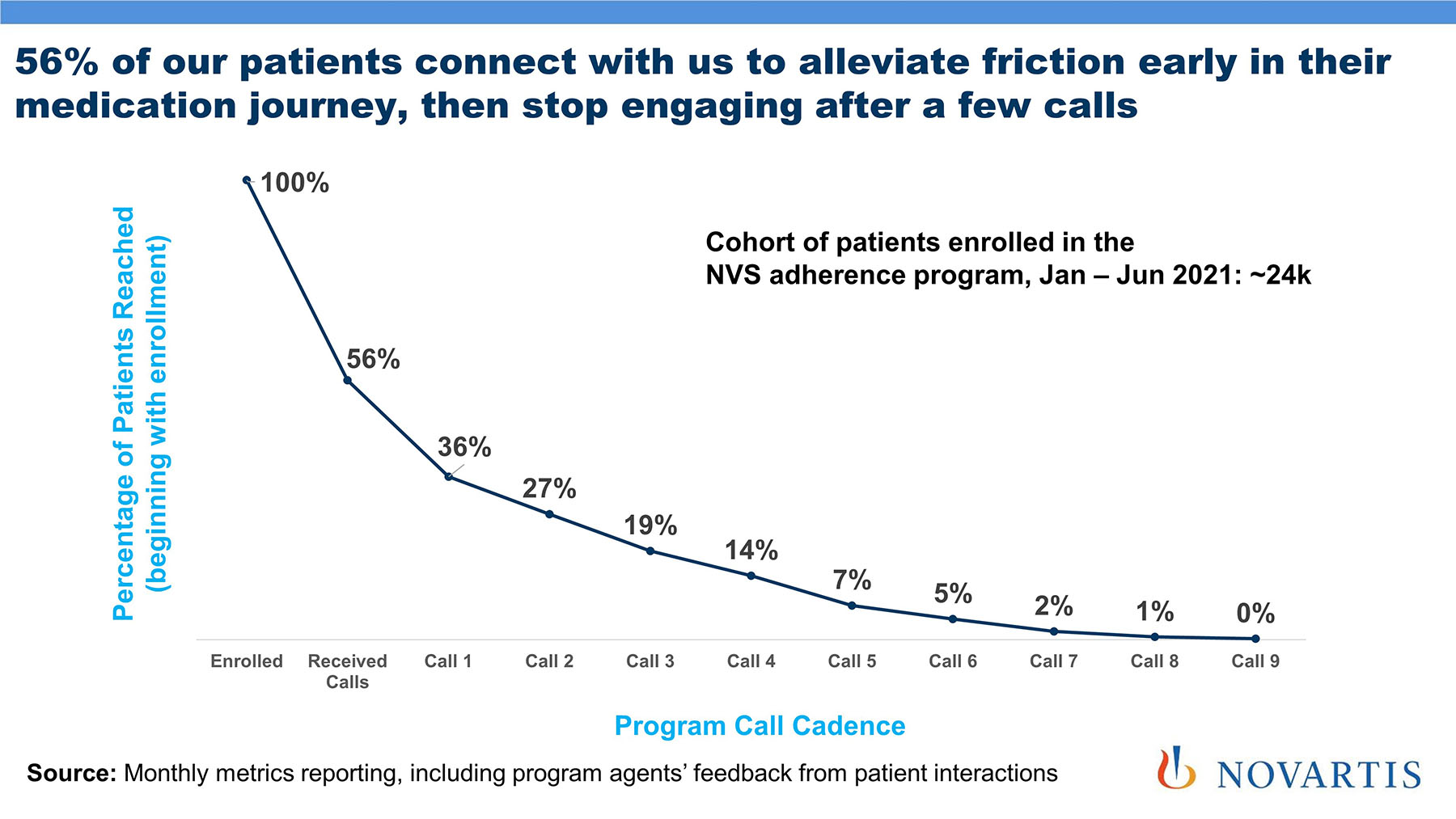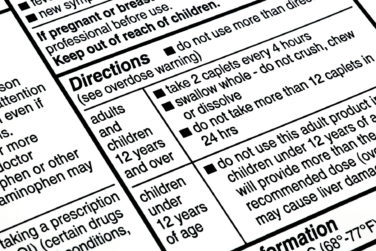“Drugs don’t work in patients who don’t take them,” C. Everett Koop, MD, U.S. Surgeon General, said in 1985. Novartis’ analysis of claims data from Nov. 2020 to Oct. 2021 revealed that roughly one in four prescriptions were never filled.1 In addition, of patients who began therapy, more than 70% were no longer on their prescribed medication after 12 months.1
Patients may discontinue if they cannot afford their out-of-pocket costs even with insurance coverage due to side effects or lack of perceived need for the medication itself. Patients who do take their medication as prescribed are three times more likely than nonadherent patients to achieve desired outcomes, including improved quality of life and better functioning.2
These challenges highlight the continuous friction patients encounter in the U.S. through diagnosis, medication selection, prescription, and chronic disease management. Traditional patient services programs that distinguish between “onboarding” versus “adherence” offerings miss the patients’ needs for cohesive mitigation of friction to achieve optimal treatment outcomes.
Challenge
At Novartis, we have reframed our patient services strategy to support patients to “start and stay on therapy.” We also recognize that patients’ needs evolve significantly through their medication journey.
From patient advisory panels across therapeutic areas, we recognize that patients who “start therapy” need to understand their paths to insurance coverage and affordability, and what comes next. As patients choose to “stay on therapy,” they need to know what to expect from their disease and medication while ensuring continued affordability of treatment.
Focused engagement and patient dialog are vital to establishing a relationship that supports the needs of patients “starting and staying on therapy.” Furthermore, patients must be able to clearly distinguish our outreaches from transactional communications they receive from insurance companies, specialty pharmacies, and other healthcare channel stakeholders (Figure 1).
 Patient engagement data also indicate a preference for fewer, more useful engagements, albeit ones that evolve in lockstep with the “lifecycle” of patient needs. It is critical for patients to engage with us early if they need help with systemic friction to gain access to prescribed medication (Figure 2).
Patient engagement data also indicate a preference for fewer, more useful engagements, albeit ones that evolve in lockstep with the “lifecycle” of patient needs. It is critical for patients to engage with us early if they need help with systemic friction to gain access to prescribed medication (Figure 2).
 In this case study, we describe recent advances Novartis is making with fewer, more focused communications that result in real impact on patient outcomes.
In this case study, we describe recent advances Novartis is making with fewer, more focused communications that result in real impact on patient outcomes.
Approach
A sharper focus on our patients’ needs for a key portfolio brand helped drive stronger outcomes through:
- Harmonized communication design that focused on essential communications on patients’ terms
- Patient outreach as early as possible with proper consent to establish our relationship and address their needs
- Heightened emphasis on early touchpoints over the first one to two months and with patient choice to continue with requested topics
This approach allowed us to:
- Select from the most useful content and refine it
- Explain concepts in three easy steps
- Use simple language to reach the widest audience
- Enable coaches and patients to choose from a library of content
START on Therapy – Our Focus:
- Capture patients’ consent and their communication preferences
- Alleviate their concerns on access and affordability
- Discuss their disease and expectations in simple terms
- Tell them what they need to know or do before beginning therapy
- List any possible side effects
- Educate them to safely take their medication as prescribed and develop a routine
STAY on Therapy – Our Focus:
- Point out clinical trial and real-world evidence with patients
- Check in with them and keep them informed
- Let them know how to continue to access the medication
Results
The results were strong:
- Increase in patients enrolling for support by phone
- Improved program retention rates
- Reduced operational and technological complexity, with gains in resource efficiencies
Ultimately, our first adopter program sharply focused early communications to the period of greatest need for patients. We were able to maintain or improve patient compliance and persistency outcomes with measurable improvement in program perception.
Lessons Learned
Assessing our patient communications helped us make informed decisions, including how to:
- Analyze the reach and frequency of program touchpoints
- Map all the transactional communications patients receive, not just those from our (manufacturer) programs
- Respond to how patient needs evolve on their medication across their disease journey
By sharing early results from an early adopter, we were able to convince others to:
- Identify and partner with “early internal adopters” and de-risk “reasons to believe” to confidently scale across a portfolio
- Monitor program metrics and address minor issues quickly
- Continue to check the quality of calls with patients for clarity, trust, and empathy
- Refine first wave of “focused designs” based on market trends, patient feedback, and patient outcomes, and anticipate the need for agile iteration throughout
Our promising results are now being broadened to the rest of our Innovative Medicines portfolio in the U.S. and upcoming drug launches.
References:
1. Novartis Patient Support internal analysis of longitudinal claims data.
2. DiMatteo MR, Giordani PJ, Lepper HS, Croghan TW. “Patient Adherence and Medical Treatment Outcomes: A Meta-analysis.” Med Care. 2002;40(9):794–811.
2. Scialli AR, Saavedra K, Fugh-Berman A. “The Benefits and Risks of Adherence to Medical Therapy.” JoSPI. 2021;3(1).
The authors acknowledge and thank Patrick Sutton, Kristen Powers, Vincent Manno, Kari Henderson, and Andrea Aedo at Novartis for their partnership on this work.
Address any correspondence regarding this article to adi.sethi@novartis.com.













